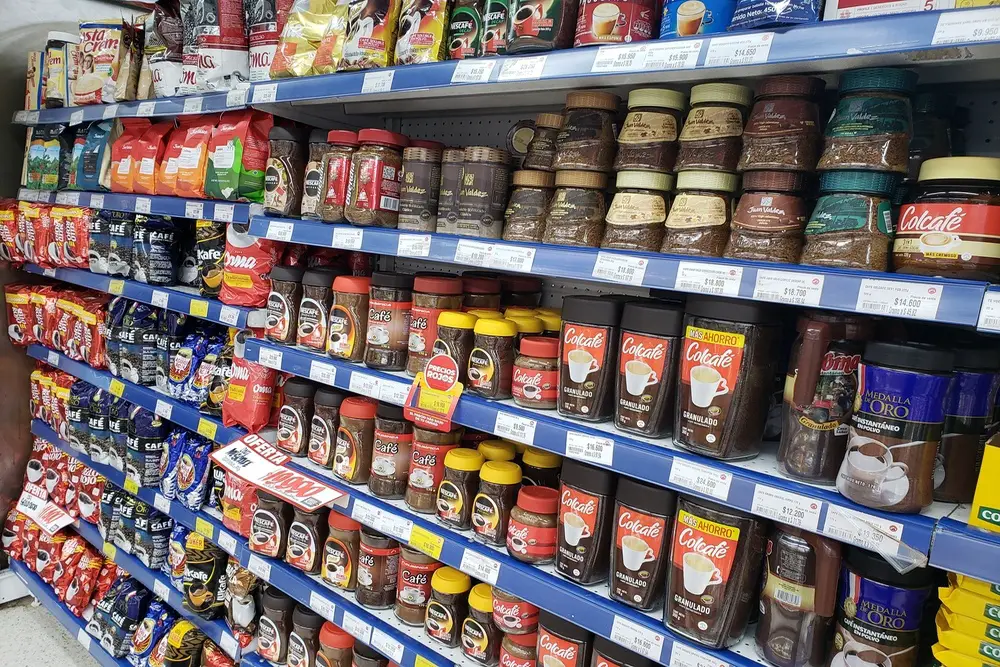About 10 million tons of coffee grounds are produced worldwide every year. In recent years, a significant part of this waste has been used to produce biofuels.
Table of Contents
Turning coffee into biofuels
Biofuels are currently mainly made from sugar cane, corn and palm oil. The sugary plants are used to produce ethanol, while palm oil is converted into biodiesel. However, growing these crops for use as fuel creates problems in deforestation and the use of resources such as land and oil.
Coffee grounds are a good alternative for use as fuel due to their high calorific value. Recycled coffee is already being used to make logs and in some furniture materials.
Research has recently found several ways to convert coffee waste into materials for water purification and carbon sequestration.
Coffee Oil Extraction
The well-known method of converting coffee waste into biodiesel involves two steps.
- The first step is to extract the oils from the coffee grounds. This is done by mixing the contents of the coffee grounds with a hexane solvent and then boiling the mixture at 69°C for 1 to 2 hours to extract the oils. The hexane must be vaporized leaving the oils in the well.
- In the second step, methanol and a biodiesel catalyst are added. The glycerine, which is also a by-product, has to be separated from the biodiesel.
A team of chemical engineers and environmental scientists at Lancaster University in the UK have simplified the solvent-based oil recovery process. They mixed waste methane and a catalyst to make biodiesel directly. The key to this was using the right concentration of sodium hydroxide and adjusting the methane to oil ratio during production.
This streamlined the process and extracted the same amount of oil from the coffee as the previous method in just 10 minutes. This reduces the time and money spent on this important process.
How much biodiesel could be obtained?
According to Anthropocene, this method could produce around 800,000 tons of this biofuel, or more than 286 million gallons, per year. This is clearly the case when all coffee grounds have been properly reused in collection and processing. Unfortunately, most just get thrown away.
Biodiesel, bioethanol and bio oils
According to Chemistry for Life, biodiesel is a growing market. It is estimated that by 2010, global biodiesel production will have reached 3 billion gallons.
By extracting the oil from the coffee grounds, you get about 150 grams per kilogram of dry coffee grounds. The UJA points out that the same soils can also contain sugars, such as that made from roasted coffee, which is fermented to produce bioethanol.
Oils can also be obtained by processes such as low, slow temperature pyrolysis.
The rest of the waste is used to make pellets. These are obtained from the defatted and unsweetened dregs, which can be log-logged like wood to be used as fuel in biomass boilers, which is the most cost-effective way of drying.
To understand the information, you must consider these terms or keywords:
- Mj /kg: Megajoules of energy required to produce one kilogram of a product.
- tCO2: in tons of carbon dioxide produced by the energy required to manufacture one kilogram of a product.
- Ethanol: An organic compound in the alcohol family, ethyl alcohol is a clear, colorless liquid and the main ingredient in alcoholic beverages.
- Ethane: A colorless, odorless gas that is flammable under normal conditions and occurs in the atmosphere in very low concentrations.
- Methane: It is a colorless, flammable gas that is non-toxic in normal environments. It is formed during the decomposition of organic material. Wetlands, animals and energy are the main sources of emissions to the atmosphere.
- Biodiesel: Is a liquid biofuel made from vegetable oils and animal fats.
- Calorific value: It describes the amount of heat generated per kilogram or cubic meter of a substance when it is completely oxidized during use.
Ground coffee
The first waste product generated when processing coffee fruit is the coffee mass (the pulp surrounding the beans), which accounts for about 44% of the fresh fruit weight (on a wet basis). For every million 60kg bags of coffee beans, there is more than 162,000 tons of fresh pulp, which if misused causes pollution equivalent to a year’s worth of waste and urine from a population of more than 868,000 people.
Use as fuel
For coffee mash, a calorific value of 15.88 Mj /kg of dry mash and a consumption during mechanical drying of 36.92 Mj are given, with the energy balance of the process being negative, since for each unit of energy used in drying the mash, 0.43 units are used generated during the incineration of the dry product.
Production of biogas
Biogas is a mixture consisting mainly of methane, between 50 and 80%, and carbon dioxide with small amounts of water vapour, hydrogen, hydrogen sulphide, ammonia, carbon monoxide, nitrogen, oxygen and other organic compounds.
It can be used as a biofuel in gas-fired incinerators or for power generation by gas turbines or gas-fired power plants. Cenicafé research reports a yield of 25 liters of biogas per 1 kg of fresh pulp fed to the fermenters.
The calorific value of the biogas with a methane content of 60% is 21.46 kg/l.
Production of bioethanol
Bioethanol is obtained from the fermentation of sugar media. After fermentation, about 10-15% is concentrated by distillation to obtain the so-called “hydrogenated alcohol” (having 4-5% water in the structure) or even absolute alcohol.
The latter is necessary if the alcohol is to be used in gasoline blends for conventional vehicles.
During alcoholic fermentation, an average of 1.2 liters of 85° ethyl alcohol is obtained, which corresponds to 500 liters of ethanol for every 1,000 arrobas of dried parchment coffee.
Coffee slime
Coffee sludge is a product of coffee processing and, when wet, accounts for about 15% of the dried fruit’s weight.
One kilogram of unsorted cherry coffee contains 91 milliliters of fermented mucilage.
For every million 60-kilogram bags, there is approximately 55,500 tons of fresh mucus, which, if used improperly, causes pollution equivalent to the urine and faeces of a population of 310,000 people.
Production of biogas
In the anaerobic decomposition of the slime, a production of 287 liters of methane per kilogram of COD (Chemical Oxygen Demand) in the fermentation process at 36°C corresponds to 336 liters of methane per 1 kilogram of COD removed.
Production of bioethanol
Research into alcoholic fermentation found that an average of 58.37 mL of ethanol was obtained from 1 kg of fresh mucilage.
Ethanol production
An article titled presents the ethanol production from fresh pulp and fresh mucilage, i.e. the bioethanol produced per million bags of green coffee.
- Tons of virgin pulp produced was approximately 162,000 tons, which equates to approximately 25 liters of ethanol per coffee waste by-product, yielding more than 1 million gallons of ethanol.
- About 55,500 tons of fresh mucilage was produced, yielding about 58.5 liters of ethanol per coffee waste, yielding over 855,000 gallons of ethanol.
Coffee fruit
It is the endocarp of the fruit, made up of the peel, the so-called cisco, and the silver film, and is a by-product with very good fuel properties.
Use as fuel
The cisco represents 4.2% of the weight of the fresh fruit, this by-product has a reported caloric content of 17.90 Mj /Kg.
Coffee grounds
Also known as cuncho, or coffee waste after being used in infusions, it corresponds to the roasted coffee beans, which make up about 10% of the fresh product’s weight.
Use as fuel
In the factories, which solubilize the coffee after drying and pressing, on the order of 8% to 15%, this waste is used as fuel in the boilers that produce steam.
Production of biogas
Biogas production with a methane content between 52% and 62% is reported as 250 to 300 liters of volatile solids from the coffee stalk, which accounts for more than 99% of the dry matter.
Production of bioethanol
It is described that up to 28 grams of ethanol can be obtained from 57 grams of cellulose from coffee shells. In addition, it is reported that the average cellulose content of the peel is about 34%, with an estimated up to 207.5 milliliters of ethanol per kilogram of dry peel.
Production of biodiesel
Biodiesel can be obtained by esterifying oils of animal or vegetable origin using methanol or ethanol to replace diesel fuel.
For the production of oils, from 9% fats from dried coffee grounds. The different varieties contain between 6 and 17% oil.
The conversion of these oils into 100% biodiesel is guaranteed.
Coffee stalks
The coffee stalks are used by the growers to cook and dry the coffee beans, thus helping to preserve the native forests.
According to the National Association of Coffee Growers of Colombia, to maintain a productive coffee culture, coffee tree renewal cycles are encouraged, achieving an average density of 5,000 trees per hectare.
The researchers report a dry wood renewal of 16 tons per hectare for the aforementioned 5,000 trees per hectare, resulting in an average production of 0.6 kilograms of stalks per 1 kilogram of cherry coffee processed.
Production of bioethanol
It is possible to obtain bioethanol from the cell fibers of coffee trees.
Coffee stalks and spoiled coffee
This is residue from threshing, including imperfect beans, split kernels, and small fruits that have the same chemical composition as the beans.
from the ripios, but these are of poor quality.
When used as a fuel, the residues have a calorific value of 15.60 Mj /kg when used as a solid fuel.
For biodiesel production
This by-product is described as yielding between 70 and 150 kilograms of oil per 1 ton of coffee.
Conclusion
It can be said that all coffee by-products or waste can be used 100%, not only in the production of biofuels, but also in other areas such as botany or in the main production of coffee beans, e.g. B. when roasting coffee beans.



